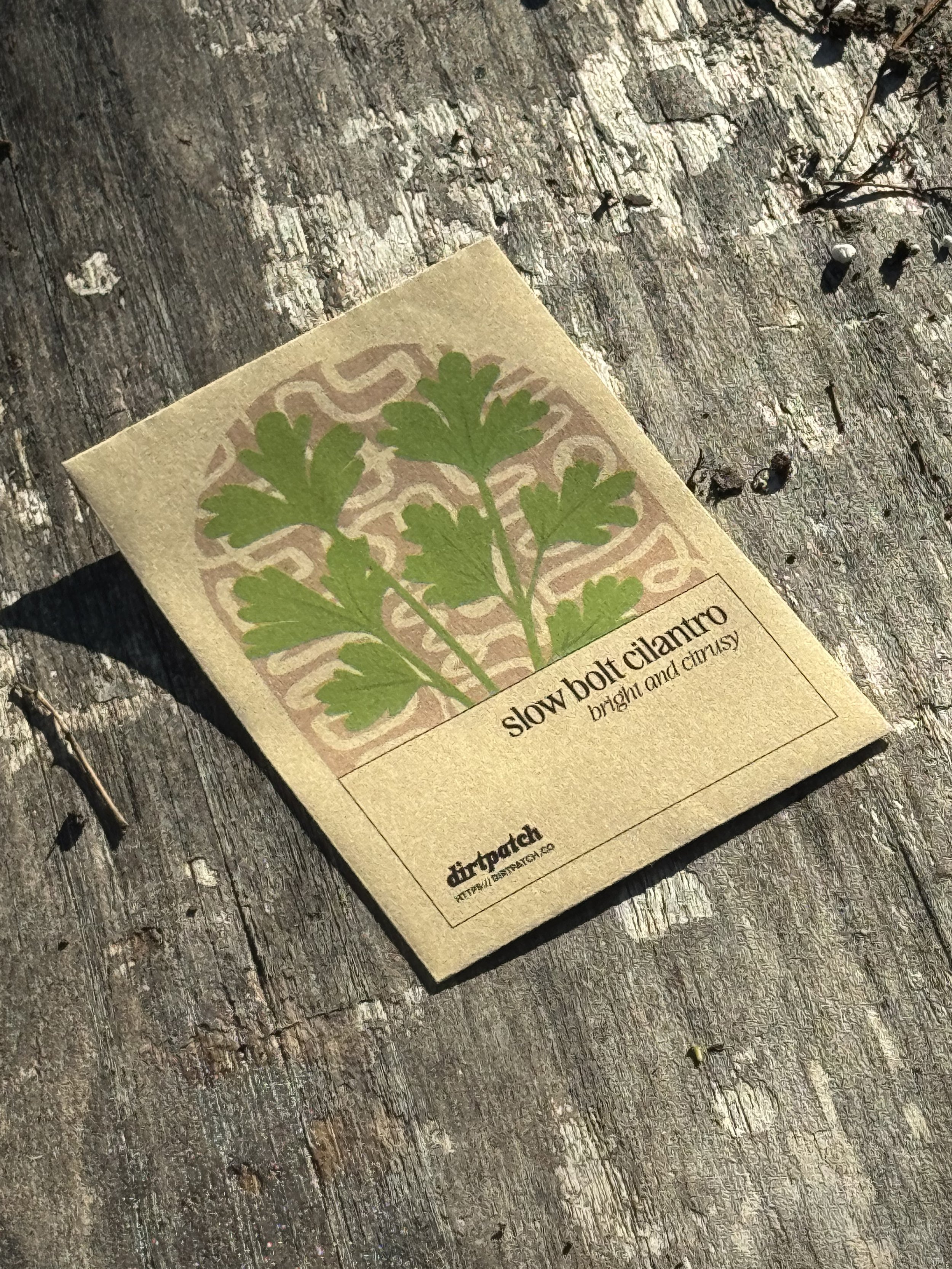Growing Instructions
Cilantro is a quick-growing annual herb, and Calypso keeps it lower hassle with its bolt resistance. It can be grown in a wide range of climates during the cooler parts of the growing season. Sow seeds directly outdoors in early spring as soon as the soil is workable, and continue planting in succession every 2–3 weeks for a continual supply of fresh leaves. Direct seeding is recommended, since cilantro develops a taproot and doesn’t like being transplanted. Choose a site with full to partial sun and well-drained soil enriched with some compost. Space seeds just a few inches apart and then to about 4"–6" inches apart to allow their bushy form to fully develop. Avoid heavy nitrogen fertilizer (too much can dilute the flavor) and instead feed lightly or use organic compost. Keep the soil evenly moist but not waterlogged. Avoiding drought stress or extreme heat will avoid triggering premature bolting.
Harvest, Storage, and Use
You can start harvesting cilantro about 4–5 weeks after sowing, once the plants are around 6" tall and have plenty of healthy leaves. For best results, snip the outer leaves or use scissors to shear the plant about an inch above the base – this method encourages the cilantro to regrow for another round. Regular picking actually extends the life of the plant, so be sure to harvest as often as possible. Leaves are best used fresh, but they will last about a week in the refrigerator if stored in a plastic bag. Eventually, the plants will begin to send up lacy flower stalks. At that point, the leaf flavor may diminish, and you can choose to pull them out and replace with a new succession planting or let a few go to flower and seed. The blossoms are edible and make a pretty garnish, and once seeds develop and start to turn brown, you can collect them to make your own coriander spice. To harvest coriander seeds, allow the seed heads to dry on the plant until they’re mostly brown, then clip them and hang upside-down in a paper bag for a week to finish drying. Shake the bag or rub the clusters to release the round seeds. Store dried coriander seeds in an airtight jar, and enjoy the vastly richer aroma of homegrown spice.
Both cilantro leaves and coriander seeds are staples in the kitchen in a lot of cuisines. Use fresh cilantro at the end of cooking to add a bright, citrusy-green note to salsas, salads, tacos, stir-fries, and chutneys. The seeds can be used whole or ground. Toast them to bring out their warm, earthy flavor and add them to curries, pickling brines, spice rubs, or even homemade spice blends like garam masala.
| 👍 Good companions | Peppers, okra, eggplant, brassicas like broccoli and tatsoi, spinach, lettuce (cilantro repels their pests and attracts beneficial insects) | ||
| 👎 Bad companions | Fennel (inhibits growth) | ||
| Growing zones | 3-10 | Crop type | Annual |
| Crop difficulty | Mid | Seed type | Open-Pollinated |
| Sowing method | Both | Containers? | Yes |
| Sun req. | Full Sun | Ideal soil temp. | 60-75°F |
| Days to germination | 7-10 days | Days to maturity | 50-60 days |
| Seed spacing | 1"-2" | Row spacing | 3" |
| Seed depth | 1/4" | Needs support? | No |

